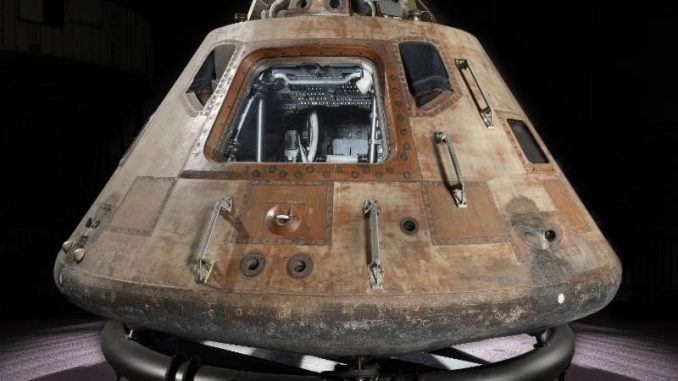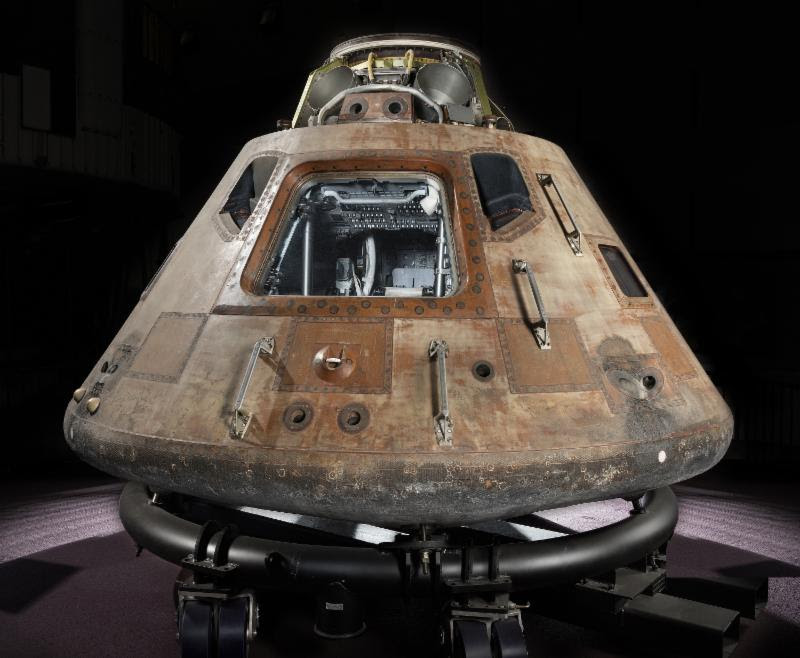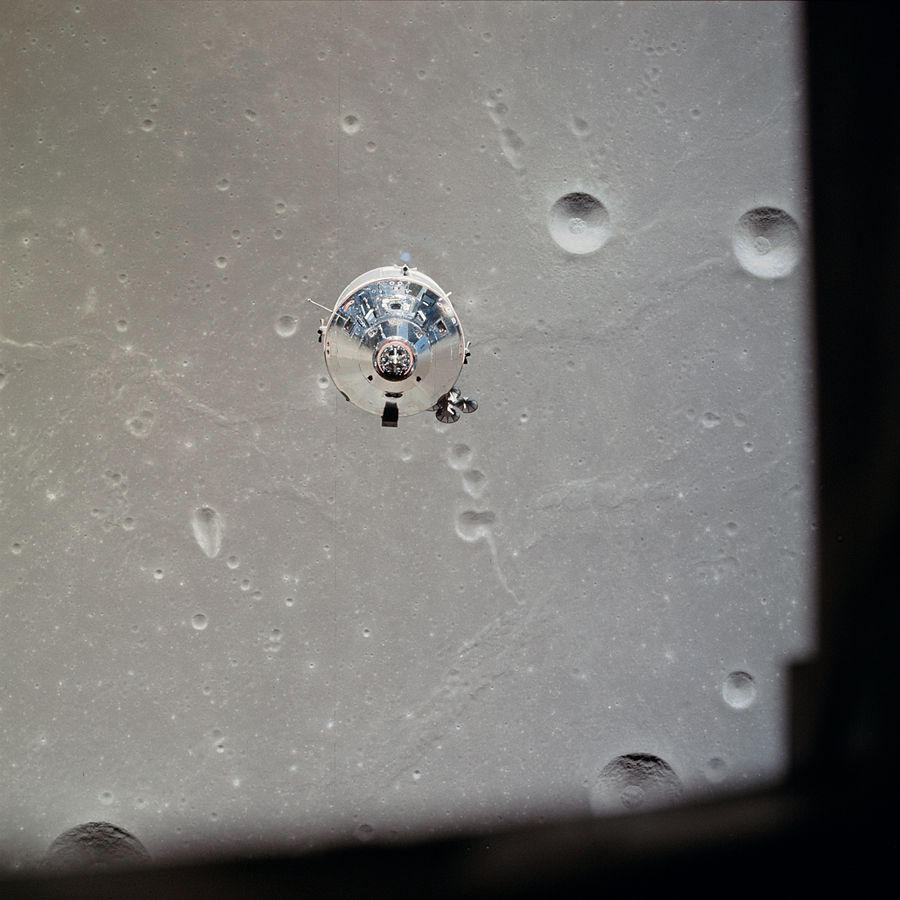

The Smithsonian Institution announced at a ceremony today that the Apollo 11 command module Columbia–the only portion of the historic spacecraft to complete the first mission to land a man on the moon and safely return him to Earth–will be exhibited at The Museum of Flight on the fiftieth anniversary of its Moon flight. The iconic capsule will leave the Smithsonian’s National Air and Space Museum for the first time in 46 years for the two-year traveling exhibition Destination Moon: The Apollo 11 Mission.
The Museum of Flight will be one of four destinations for Destination Moon: The Apollo 11 Mission during its national tour beginning in April 2018. The exhibition comes to The Museum of Flight in Seattle March 16-Sept. 2, 2019, making it the last stop–and only West Coast destination–of the tour. Following Seattle, the Apollo 11 command module will return to Washington, D.C., where it will be part of a new gallery opening in 2020 at the National Air and Space Museum.
Past adventures to the Moon begin this year at The Museum of Flight in May 20, with the opening of Apollo. Using rare artifacts from the Museum of Flight’s collection, this major exhibit will immerse visitors into the early story of spaceflight and into the Apollo Moon missions. Apollo will will be modified with the opening of the Destination Moon: The Apollo 11 Mission.

About Destination Moon: The Apollo 11 Mission
Through original Apollo 11-flown objects, models, videos and interactives, visitors will learn about the historic journey of the Apollo 11 crew-Neil Armstrong, Michael Collins and Buzz Aldrin. Destination Moon: The Apollo 11 Mission will include an interactive 3-D tour, created from high-resolution scans of Columbia performed at the Smithsonian in spring 2016. The interactives will allow visitors to explore the entire craft including its intricate interior, an interior that has been inaccessible to the public until now.
>On July 24, 1969, Apollo 11 met President John F. Kennedy’s 1961 challenge to ‘land a man on the moon and return him safely to the Earth.’ The exhibition will explore what led the United States to accept this challenge and how the resulting 953,054-mile voyage to the moon and back was accomplished just eight years after the program was authorized. Destination Moon: The Apollo 11 Mission will examine the mission and shed a light on some of the more than 400,000 people employed in NASA programs who worked through the trials, tragedies and triumphs of the 20 missions from 1961 to 1969 before Apollo 11.
The tour will mark the first time Columbia will leave the National Air and Space Museum since the museum opened to the public in 1976. Before entering the collection, the command module traveled on a 50-state tour throughout 1970 and 1971 covering more than 26,000 miles. It then went on display in the Smithsonian’s Arts and Industries Building before the current National Air and Space Museum was built on the National Mall.
Destination Moon: The Apollo 11 Mission is made possible by the support of Jeff and Mackenzie Bezos, Joe Clark, Bruce R. McCaw Family Foundation, the Charles and Lisa Simonyi Fund for Arts and Sciences, John and Susann Norton, and Gregory D. and Jennifer Walston Johnson. Transportation services for Destination Moon are provided by FedEx.
About The Museum of Flight
Founded in 1965, the independent, nonprofit Museum of Flight is one of the largest air and space museums in the world, serving more than 560,000 visitors annually. The Museum’s collection includes more than 160 historically significant airplanes and spacecraft, from the first fighter plane (1914) to today’s 787 Dreamliner. Attractions at the 20-acre, 5-building Seattle campus include the original Boeing Company factory, and the only full-scale NASA Space Shuttle Trainer. With a foundation of aviation history, the Museum is also a hub of news and dialogue with leaders in the emerging field of private spaceflight ventures. The Museum’s aviation and space library and archives are the largest on the West Coast. More than 150,000 individuals are served annually by the Museum’s onsite and outreach educational programs. The Museum of Flight is accredited by the American Association of Museums, and is an Affiliate of the Smithsonian Institution.
The Museum of Flight is located at 9404 E. Marginal Way S., Seattle, Exit 158 off Interstate 5 on Boeing Field halfway between downtown Seattle and Sea-Tac Airport. The Museum is open daily from 10 a.m. to 5 p.m. Museum admission for adults is $23 on-site and $21 online. Youth 5 through 17 are $14 on-site and $13 online, youth 4 and under are free. Seniors 65 and over $19 on-site and $18 online. Groups of ten or more: $21 per adult, $13 per youth, Thanks to Wells Fargo, on the first Thursday of every month, admission is free from 5:00 to 9:00 p.m. And parking is always free. There is a full lunch menu café in the Museum and a limited menu café in the Aviation Pavilion, both operated by McCormick & Schmick’s. For general Museum information, please call 206-764-5720 or visit www.museumofflight.org

Be the first to comment
Graphic Design, Branding and Aviation Art